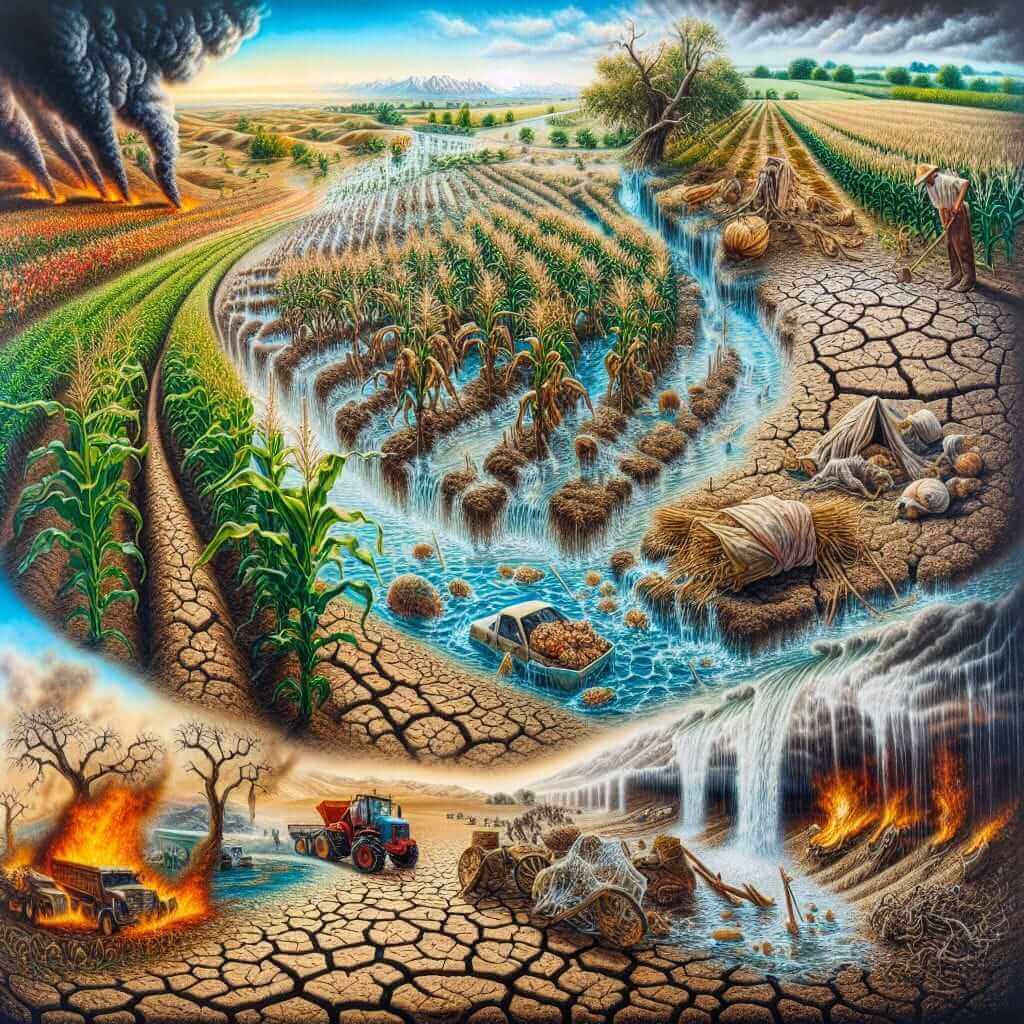Reading is one of the four key components of the IELTS exam, and topics related to climate change and global food supply have been increasingly popular. Considering the relevance and urgency of climate change, it’s likely similar themes will continue to appear in future exams. In this article, we will provide a detailed reading practice exercise modeled on the IELTS format, inspired by the keyword “How is climate change impacting global food supply chains?”.
Sample Reading Passage
Title: How is Climate Change Impacting Global Food Supply Chains?
Climate change has multifaceted impacts on global food supply chains, posing significant threats to food security worldwide. Rising temperatures, shifting weather patterns, and increased frequency of extreme weather events are chief among these impacts. Each stage of the food supply chain, from production to distribution, is vulnerable to the effects of climate change.
Production: Climate change affects crop yields in myriad ways. Higher temperatures can lead to heat stress, reducing crop productivity. Changes in precipitation patterns can cause droughts in some regions and floods in others, negatively impacting soil health and water availability. Furthermore, the increased prevalence of pests and diseases under changing climatic conditions can further reduce agricultural output.

Supply Chain Disruptions: Beyond the farm, climate change can disrupt the transportation and storage of food. Extreme weather events such as hurricanes and floods can damage infrastructure, delaying or preventing the delivery of food products. Higher temperatures can also spoil perishable foods more quickly if proper storage conditions are not maintained.
Economic Impact: The economic repercussions are equally severe. Rising costs of inputs like water and fertilizers, coupled with lower yields, inflate food prices. This trend particularly affects poorer populations, exacerbating inequalities and food insecurity.
Adaptation Strategies: Various adaptation strategies are being employed to combat these challenges. Developing drought-resistant crops, improving irrigation systems, and implementing advanced weather forecasting can help stabilize food production. Enhancing infrastructure resilience and adopting better storage technologies can minimize supply chain disruptions.
Conclusion: Addressing the impacts of climate change on food supply chains requires a comprehensive approach involving international cooperation, innovation in agricultural practices, and robust economic policies. Ensuring food security in a changing climate remains one of the most pressing challenges of our time.
Reading Questions
Multiple Choice Questions
-
According to the passage, which is NOT a direct way climate change impacts crop yields?
a. Heat stress
b. Increased soil health
c. Changes in precipitation patterns
d. Increased prevalence of pests and diseases -
What effect do extreme weather events have on food transportation?
a. Enhance transportation efficiency
b. Ensure timely delivery
c. Spoil perishable foods
d. Damage infrastructure and delay deliveries
Identifying Information (True/False/Not Given)
- Climate change only affects the production stage of the food supply chain.
- Developing drought-resistant crops is an adaptation strategy to combat climate change effects.
- Improved weather forecasting has no impact on food production stability.
Sentence Completion
- The economic repercussions of climate change on food supply chains include ___.
- To combat disruptions in the food transportation sector, it is essential to ___.
Answers and Explanations
Multiple Choice Questions
-
b. Increased soil health
Explanation: Climate change is mentioned as causing “negatively impacting soil health,” not increasing it. -
d. Damage infrastructure and delay deliveries
Explanation: The passage states that extreme weather events can “damage infrastructure, delaying or preventing the delivery of food products.”
Identifying Information
-
False
Explanation: The passage mentions that climate change also impacts transportation and storage, beyond just production. -
True
Explanation: It is indicated that “developing drought-resistant crops” is one of the adaptation strategies. -
Not Given
Explanation: The passage discusses improved weather forecasting as an adaptation strategy but does not state whether it impacts food production stability.
Sentence Completion
-
The economic repercussions of climate change on food supply chains include inflation of food prices due to rising costs of inputs like water and fertilizers coupled with lower yields.
-
To combat disruptions in the food transportation sector, it is essential to enhance infrastructure resilience and adopt better storage technologies.
Common Mistakes
- Misreading information: Ensure you comprehensively understand each part of the passage to avoid incorrect answers.
- Time management: Practice under timed conditions to feel comfortable and efficient within the test time limits.
- Misinterpreting True/False/Not Given: Focus on exactly what is stated in the passage to avoid assuming information.
Vocabulary
- Multifaceted (adj): /,mʌltiˈfæsɪtɪd/ – having many aspects.
- Prevalence (n): /ˈprevələns/ – the fact or condition of being prevalent; commonness.
- Exacerbate (v): /ɪgˈzæsərˌbeɪt/ – make (a problem, bad situation, or negative feeling) worse.
Grammar Focus
- Complex Sentences: “Climate change has multifaceted impacts on global food supply chains, posing significant threats to food security worldwide.”
Structure: Main clause + comma + present participle clause.
Tips for a High IELTS Reading Score
- Practice regularly using timed exercises.
- Expand your vocabulary on various topics.
- Develop an understanding of different question types and how to approach them.
- Improve your skimming and scanning techniques for quicker information retrieval.
- Always verify your answers with the passage, especially for True/False/Not Given questions.
Achieving a high score in the IELTS Reading section is a combination of strategy, practice, and understanding test formats. Keep practicing with various topics, use past exam papers for better familiarity, and always analyze your mistakes.